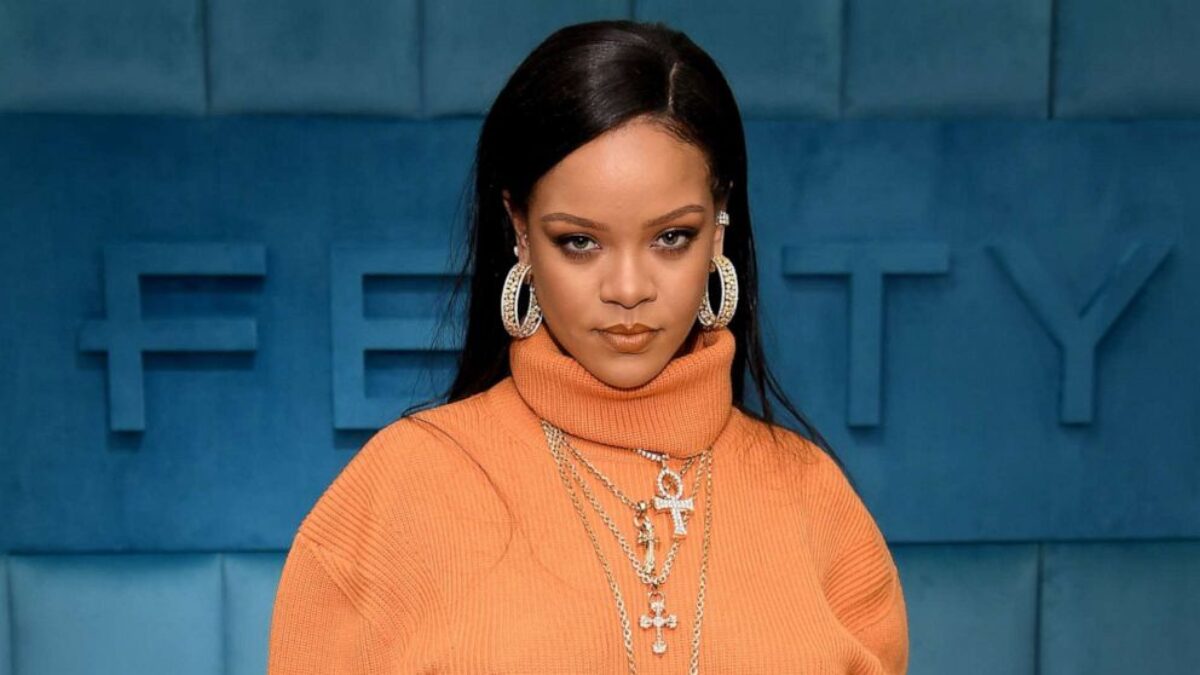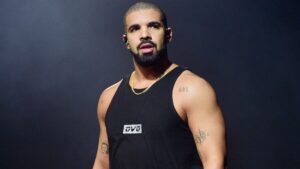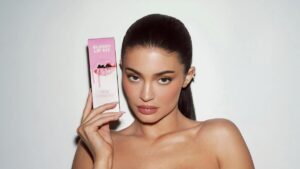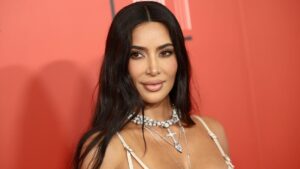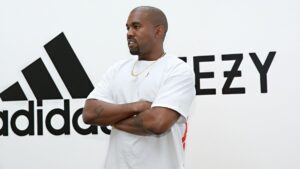From the moment Rihanna first dominated global charts, she carried a charisma that felt larger than music itself. But what few anticipated was how seamlessly she would pivot from hitmaker to modern mogul, rewriting the rules of what celebrity entrepreneurship could be. Her ventures—Fenty Beauty and Savage X Fenty—weren’t vanity projects or limited-edition side hustles. They were carefully architected empires that tapped into unmet demand and reshaped entire industries.
At the heart of her success lies a celebrity wealth strategy rooted in authenticity and cultural awareness. Rihanna didn’t just sell products; she sold belonging. From foundation shades that finally embraced all skin tones to lingerie campaigns celebrating every body type, she built brands on inclusive branding rather than exclusivity. The result: consumers felt seen, investors felt confident, and competitors were forced to rethink outdated models.
The question, then, is no longer how a singer became one of the most powerful business figures of her generation. But rather, how did Rihanna create the blueprint for a new era of celebrity-led empires? This story begins not with music, but with a vision that transcended it.
Why Did Rihanna Launch Fenty Beauty and Savage X Fenty?
When people ask why Rihanna started Fenty Beauty, the answer isn’t rooted in business spreadsheets but in lived experience. Growing up in Barbados and later navigating global fame, she often spoke about the frustration of walking into beauty stores and finding few, if any, foundation shades that matched her skin tone. That absence wasn’t personal—it was systemic, a reflection of an industry that largely ignored millions of consumers. Launching Fenty Beauty in 2017, Rihanna set out to correct that gap with an inclusive shade range that started at forty and has since expanded, setting a new industry standard.
The same vision fueled Savage X Fenty, her lingerie brand. Rihanna noticed how fashion often celebrated one body type while sidelining others. She wanted a line where women—and men—could feel both confident and comfortable, no matter their size or shape. Savage X wasn’t about selling lingerie; it was about body empowerment, representation, and celebrating individuality.
Both brands emerged at a cultural crossroads where diversity and inclusivity were no longer optional—they were demanded. Rihanna recognized that moment, infused it with authenticity, and turned personal frustration into a global movement. In doing so, she proved that representation isn’t just powerful—it’s profitable.
How Fenty Beauty Disrupted the Beauty Industry
When Fenty Beauty launched in 2017 with an unprecedented 40 foundation shades, it wasn’t just a product drop—it was a cultural reset. For decades, beauty counters had leaned heavily toward lighter tones, leaving deeper complexions underserved. Rihanna flipped that norm overnight, positioning inclusivity not as a niche but as the baseline. Consumers immediately recognized the shift, fueling a viral wave of praise across social media. Within weeks, Sephora shelves were emptied of darker shades first—a reversal of the industry’s usual sales pattern.
The buzz was so powerful that it forced legacy giants like Estée Lauder and L’Oréal to fast-track their shade expansions. Media outlets called it the “Fenty Effect,” a term that captured the seismic industry disruption. What was unique about Fenty Beauty’s foundation launch was not just the number of shades, but the authenticity behind them—representation that felt real, not performative.
This inclusive beauty movement resonated globally, proving that underserved consumers were not a small minority but a massive, loyal market. In one bold stroke, Rihanna turned inclusivity into innovation, setting a new standard that the entire industry had no choice but to follow.
From Social Media Buzz to User-Generated Content
The brilliance of the Fenty Beauty marketing strategy lay in how Rihanna blurred the line between brand and community. Instead of relying solely on glossy ads, she seeded excitement on Instagram, YouTube, and Twitter, where beauty lovers could test, review, and share their experiences. The brand didn’t just speak to consumers—it handed them the microphone. Within days of launch, tutorials and reviews from micro-influencers went viral, showing shoppers around the world what inclusivity looked like on real faces.
Rihanna’s presence amplified the effect. Her direct engagement—posting swatches, resharing fan content, and spotlighting diverse creators—gave the brand authenticity. For many customers, it was the first time they saw someone with their exact complexion celebrated in a major campaign. That emotional connection turned into loyalty, fueling viral campaigns that traditional beauty giants couldn’t replicate.
This digital-first approach showcased not just celebrity branding success, but how empowering the community itself can become the most powerful form of advertising.
Savage X Fenty: More Than Just Lingerie
Redefining Body Positivity and Representation in Fashion
Savage X Fenty entered the market as more than inclusive lingerie — it was a cultural declaration. While traditional lingerie brands often clung to narrow ideals of beauty, Rihanna built Savage X on the foundation of body positivity fashion, celebrating every size, shape, and identity. The message was clear: lingerie wasn’t about fitting into someone else’s standard; it was about feeling powerful in your skin.
The brand’s diverse fashion shows amplified this mission. Models of all body types, genders, and backgrounds walked alongside dancers and performers, creating spectacles that doubled as cultural events. This wasn’t representation as tokenism — it was woven into the DNA of the brand.
What makes Savage X Fenty different is how it fused empowerment with profitability. By aligning inclusivity with desirability, Rihanna proved that diversity could drive demand, loyalty, and long-term growth. Savage X became not just lingerie, but a movement of confidence and belonging.
The Power of Fashion Shows as Streaming Events
The Savage X Fenty show’s Amazon Prime partnership redefined what a runway could be. Instead of a closed-door event for editors and insiders, Rihanna transformed the catwalk into a global spectacle—streamed to millions. Picture dancers, artists, and models moving through immersive sets, blending choreography with couture. It wasn’t a fashion show; it was a concert, a film, and a celebration rolled into one.
This digital-first runway format blurred the boundaries between fashion, music, and entertainment. Performances from stars like Normani, Lizzo, and Rosalía turned lingerie launches into cultural moments that trended worldwide. Fans weren’t just watching clothes; they were experiencing fashion as entertainment.
The result answered the question of why is Savage X Fenty show is so popular. — because it invites everyone into the spectacle. Rihanna democratized the runway, making it accessible, inclusive, and unforgettable, setting a new industry benchmark for how brands connect with audiences.
The Business Blueprint: Rihanna’s Wealth Strategy Explained
Partnerships with LVMH and Tech-Driven Growth
Rihanna’s decision to partner with LVMH, the world’s largest luxury group, was a masterstroke in brand building. Rather than shouldering the burden of distribution, logistics, and global retail alone, she leveraged a luxury partnership that gave Fenty Beauty immediate credibility and reach. With LVMH’s infrastructure behind her, Rihanna could scale faster than any typical celebrity brand, positioning Fenty alongside legacy houses like Dior and Givenchy while keeping her creative authority intact.
The deal was structured around equity stakes, meaning Rihanna isn’t just a face—she’s an owner. That distinction matters: it ensures she participates directly in the long-term growth and valuation of her companies. On the operational side, Fenty’s embrace of tech-driven growth has been equally crucial. From analyzing customer feedback in real time to tailoring product rollouts for specific markets, the brand uses data as aggressively as it does celebrity power.
For anyone asking “How does Rihanna make money from Fenty?” the answer lies in this hybrid model: a mix of strategic partnerships, ownership equity, and cutting-edge scalability. It’s a playbook for how to turn a celebrity into an empire.
Revenue Streams and Valuation of Fenty Brands
When people ask “How much is Fenty Beauty worth?” the answer illustrates just how quickly Rihanna’s empire scaled. Launched in 2017, Fenty Beauty generated over $550 million in its first year, a figure that stunned even industry veterans. By 2019, analysts pegged its valuation at $3 billion, cementing it as one of the fastest-growing beauty brands ever. Meanwhile, Savage X Fenty—launched in 2018—attracted heavy investor interest, raising more than $300 million in funding and reaching a valuation of $1 billion by 2021.
What makes this story compelling is not just the figures but the pace. Rihanna turned inclusivity into a driver of Fenty revenue growth, converting cultural resonance into hard numbers. These valuation milestones underscore her ability to build not just hype but lasting equity. It’s a textbook celebrity wealth breakdown—where artistry, ownership, and market demand converge into generational wealth.
| Year | Milestone | Valuation/Revenue |
| 2017 | Fenty Beauty Launch | $550M revenue (Year 1) |
| 2018 | Savage X Fenty Launch | Seed funding secured |
| 2019 | Fenty Beauty Valuation | $3B+ |
| 2021 | Savage X Fenty Valuation | $1B |
How Rihanna’s Brand Stands Against Other Celebrity Empires
Rihanna vs. Kylie Jenner vs. Kim Kardashian — Who Built the Strongest Brand?
In the ongoing celebrity brand comparison, few rivalries draw more attention than Fenty Beauty vs Kylie Cosmetics—with Kim Kardashian’s SKIMS adding another layer. Kylie Jenner leaned into exclusivity and urgency, building a billion-dollar cosmetics empire on limited drops and social media hype. Kim, on the other hand, crafted SKIMS as a shapewear and lifestyle brand, focusing on minimalism, sleek design, and mainstream accessibility. Both sisters found success, but their strategies often reflected traditional playbooks: hype-driven sales for Kylie, lifestyle integration for Kim.
Rihanna’s path diverged sharply. With Fenty Beauty, inclusivity wasn’t an afterthought—it was the core proposition. Forty foundation shades signaled a radical departure from exclusivity marketing, creating immediate loyalty among overlooked consumers. Public perception followed suit: while Kylie and Kim were often seen as savvy opportunists, Rihanna was celebrated as an innovator addressing real gaps in beauty and fashion.
So, who built the strongest brand? The answer depends on metrics—valuation, cultural impact, or longevity. But in terms of reshaping industry standards and redefining what a modern mogul can be, Rihanna’s model stands apart.
Lessons from LeBron, Beyoncé, and Other Moguls
When placed alongside other celebrity business models, Rihanna’s strategy stands out for its mix of authenticity and accessibility. Take LeBron James, whose mogul strategy centers on media ownership and investments—SpringHill Entertainment and equity stakes that position him as a power player in storytelling and sports culture. Or consider Beyoncé, whose Ivy Park collaboration with Adidas blends performance wear with star power, leaning into exclusivity and limited releases. Both have been successful, but their ventures still orbit around their celebrity.
Rihanna’s model of cultural entrepreneurship feels different. By embedding inclusivity into the DNA of her brands, she created a business that can stand independently of her celebrity while still benefiting from it. This approach builds cultural longevity—consumers identify with Fenty’s values, not just Rihanna’s image. In doing so, she has crafted a blueprint where the celebrity becomes not just the face of the brand but the architect of a movement.
How Fenty Became a Cultural Phenomenon Worldwide
Fenty’s Success in Emerging Markets
Fenty’s rise wasn’t confined to U.S. shelves—it quickly became a case study in global expansion within the international beauty industry. From its early days, Rihanna made sure the brand wasn’t just accessible in Western markets but tailored to consumers in emerging markets where inclusivity was often ignored. In Africa and Asia, Fenty Beauty’s foundation shades resonated with millions who had long struggled to find matches. In the Middle East, the brand leaned into cultural sensitivity while maintaining its bold, fashion-forward edge.
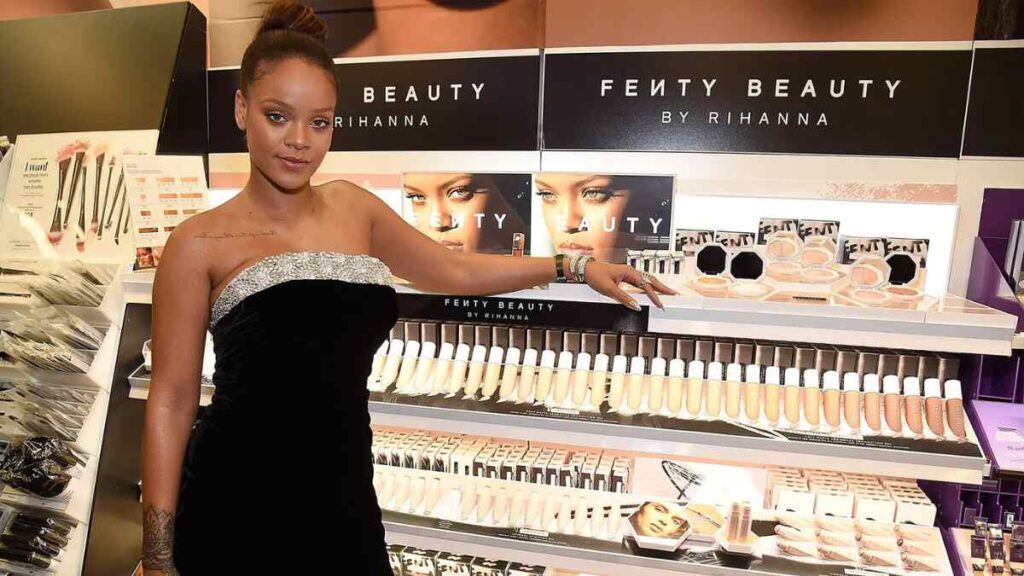
Savage X Fenty followed a similar path in Europe, offering extended lingerie sizing that challenged the region’s traditional fashion norms. By localizing campaigns and ensuring products truly reflected diverse consumers, Fenty built trust that global competitors often failed to earn.
So when fans ask, “Is Fenty Beauty available worldwide?” the answer is yes—and its reach reflects more than distribution. It’s proof that inclusivity translates across borders, fueling loyalty in markets once overlooked by mainstream beauty and fashion giants.
The Social Impact: From Diversity to Cultural Longevity
Fenty’s influence goes far beyond sales figures—it reshaped what consumers expect from brands. By centering diversity in fashion and beauty, Rihanna made inclusivity a non-negotiable standard rather than a marketing afterthought. Competitors who once treated shade ranges or size extensions as niche offerings were suddenly forced to evolve. This ripple effect has changed hiring in modeling, advertising campaigns, and even how beauty aisles are stocked worldwide.
But the inclusive brand impact of Fenty also ties into broader conversations about social justice. Representation matters not just because it sells products, but because it affirms identities and challenges outdated norms. In that sense, Rihanna’s strategy aligned commerce with culture, demonstrating that profitability and responsibility can coexist.
The result is cultural longevity. Fenty isn’t just a moment in the market—it’s a movement that continues to shape beauty and fashion standards for the next generation, proving that true innovation is measured in lasting cultural change.
My First Experience with Fenty Beauty
I still remember my experience with Fenty Beauty as if it were yesterday. I walked into Sephora the week the brand launched, more out of curiosity than intent to buy. The shelves were buzzing with energy—people swatching, chatting, comparing shades like it was a community event rather than a shopping trip. When I finally sat down to test the foundation, something shifted. For the first time, I found a shade that blended seamlessly with my skin—no mixing, no compromises, no settling.
That small moment carried weight. It wasn’t just about trying Fenty foundation for the first time; it was about feeling seen in an industry that had so often overlooked people like me. Later, when I watched the first Savage X Fenty show on Amazon Prime, I recognized that same spirit on the runway: bodies of every shape and color celebrated unapologetically.
Here’s how it felt—and why it mattered: Rihanna didn’t just create products; she created belonging. And in that belonging lies the true genius of her empire.
What Rihanna’s Branding Blueprint Teaches the Next Generation of Moguls
Rihanna’s empire demonstrates that true mogulship isn’t built on celebrity status alone, but on vision, values, and cultural timing. She took the familiar model of the star-turned-entrepreneur and redefined it with inclusivity, diversification, and cultural resonance at the core. Fenty Beauty disrupted beauty standards; Savage X Fenty rewrote the rules of representation in fashion. Together, they show that when a brand embodies authenticity, it creates loyalty far deeper than hype.
For the next generation of celebrity entrepreneurs, Rihanna’s path offers a clear lesson: wealth today is not just financial—it’s cultural. The most enduring empires will be those that listen, adapt, and reflect the people they serve. Whether in beauty, fashion, or entirely new industries, the blueprint she’s built proves that modern moguls thrive by aligning profit with purpose.
In the end, Rihanna’s empire shows that modern celebrity wealth is built on culture, not just products. And that is the legacy that will outlast any chart-topping single or seasonal trend.
Mohit Wagh is the co-founder of The Graval with over 10 years of experience in SEO and content strategy. He specializes in crafting data-driven, authoritative content that blends cultural insight with digital growth.
